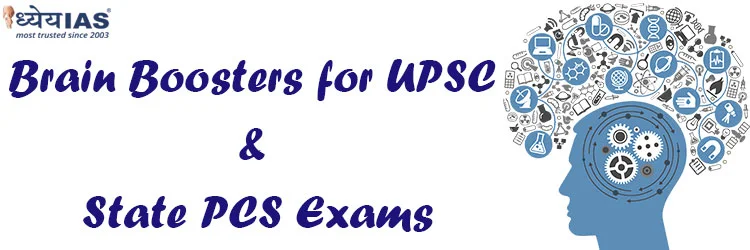Current Affairs Brain Booster for UPSC & State PCS Examination
Topic: National Digital Health Mission

Why in News?
- Prime Minister Narendra Modi’s announcement of a national health ID for every Indian while addressing the nation on the occasion of 74th Independence Day is envisioned as India's first step towards Universal Health Coverage.
The Mission
- The National Digital Health Mission (NDHM), which comes under the Ayushman Bharat Pradhan Mantri Jan Arogya Yojana (AB PM-JAY), is expected to improve the efficiency, effectiveness, and transparency of health services in the country
- It will provide a comprehensive health ecosystem that will have digitally empowered individuals, doctors, and health facilities, facilitate electronic signatures, enabling paperless registrations and payments, leading to streamlining of healthcare information.
- NDHM would provide technology to manage and analyse data, and create a system of personal health records and health applications. Central to the “ecosystem” would be a Personal Health Identifier (PHI) to maintain a Personal Health Record (PHR).
- The PHI would contain the names of patients and those of their immediate family, date of birth, gender, mobile number, email address, location, family ID and photograph.
- While Aadhaar assures uniqueness of identity and provides an online mechanism for authentication, it cannot be used in every health context as per the applicable regulations.
Working of the Mission
- As per the National Health Authority (NHA), every patient who wishes to have their health records available digitally must start by creating a unique Health ID.
- The health ID will contain information about medical data, prescriptions and diagnostic reports, and summaries of previous discharge from hospitals for ailments.
- The design of PHI, therefore, must allow multiple identifiers (chosen from the specified types of identifiers) for designing the structure and processes relating to PHI.
- National Health Authority (NHA), which is the implementing agency for the Pradhan Mantri Jan Arogya Yojana, has also been working on creating a digital health ecosystem, complete with a personal health ID for every Indian, identifiers for doctors and health facilities and personal health records.
NDHM: Integrating Technology and Health
- Personal health ID for every Indian - Among the first systems to be rolled out will be the digital health identifier, ‘Swasthya Account’, which will help individuals create their identity in the national healthcare system for ease of access to their personal health information.
- Registry of doctors- A comprehensive central repository known as ‘digi doctor’ will be made of all healthcare providers and practitioners (HCPs), uniquely identified in India, to provide a one-stop solution for streamlined medical practice.
- Registry of health facilities, e-pharmacy and telemedicine services across the country- A health facility registry will collate information on healthcare facilities uniquely identified in India, which will maintain, store and facilitate exchange of standardised data.
- Digitised health records - The system will digitise health records of patients, inclusive of various documents such as diagnostic report, discharge summary, and prescription, shared by various health establishments and doctors to help patients effectively manage their care.
Personal Health Identifier
- The Health Ministry has decided to consult Unique Identification Authority of India (UIDAI), which issues Aadhaar, and the Ministry of Electronics and Information Technology (MeitY) in the design of the PHI.
- These recommendations come from a National Digital Health Blueprint (NDHB) created by a committee.
- The 14-member committee included officials from the Health Ministry, state governments, NITI Aayog, MeitY, National e-Governance Division (NeGD), NIC, CDAC and AIIMS.
- The panel envisions the new Mission to be autonomous like UIDAI and GSTN (Goods and Services Tax Network).
- It would be partly funded by the government but will also “raise a part of its funding through a transaction fee” with private players.
- The committee has also suggested a Command, Control, and Communication Center (CCCC) as a single point of contact in public health emergencies.
- It estimates that all the components of the Mission would take about 18 months to develop.
- An appropriate digital consent framework as per standards specified by NDHB (leveraging DigiLocker consent management framework to the extent possible) will be adopted for consent management









